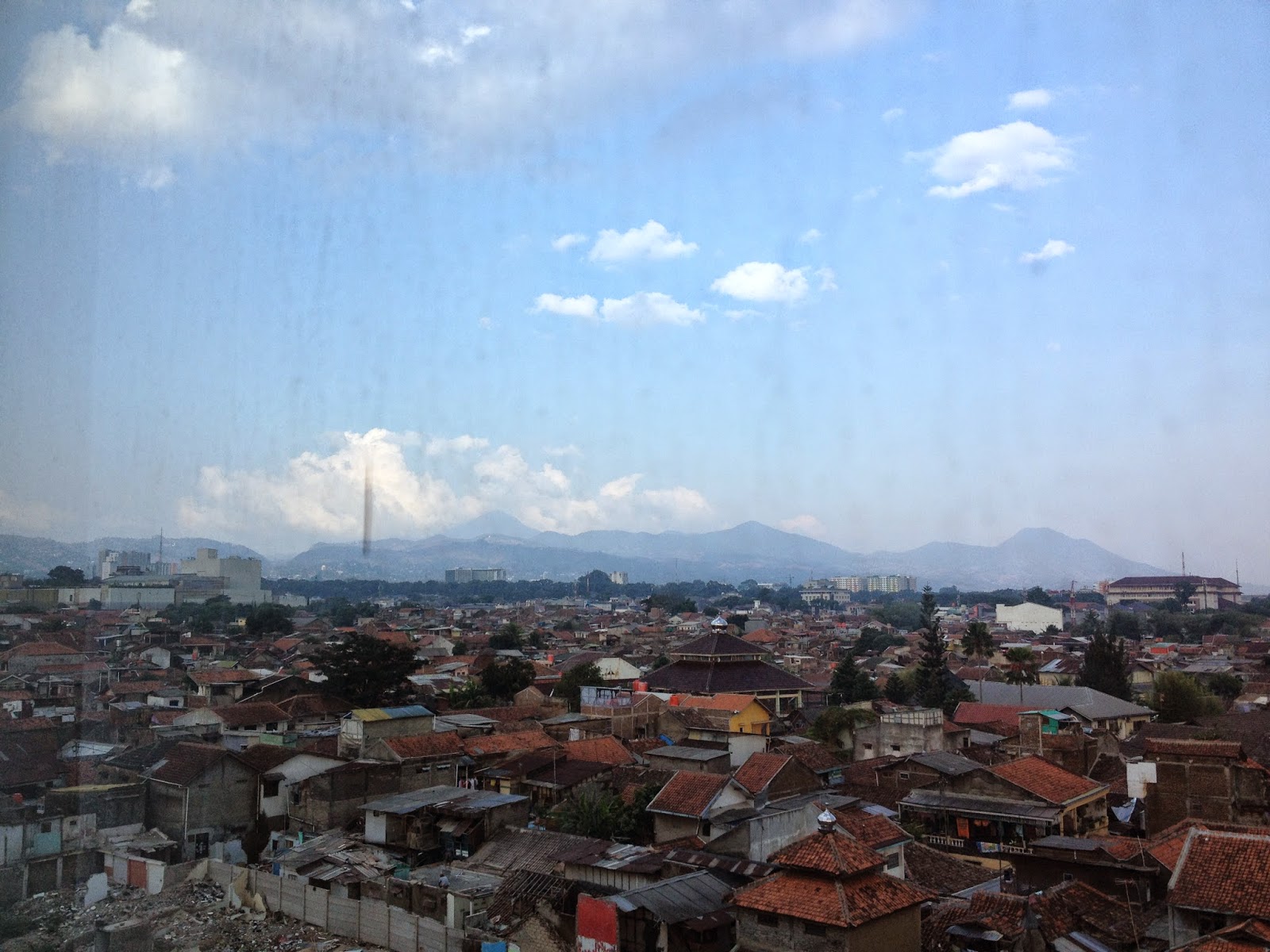Indonesian food is not well known outside of Southeast Asia. Like most cuisines, it has been influenced deeply by both its environment (the sea) and its neighbors (China especially). There really is no such thing as "Indonesian food" in a nation composed of thousands of islands and hundreds of ethnicities, but some elements seem common across the vast nation.
The two photos above were taken at the local public market (pasar) in a small town in Bali and show some of the key elements of Indonesian cooking -- various forms of salted and/or dried fish and garlic, shallots, and lemongrass. I think it is safe to say that an Indonesian meal is rarely prepared without some combination of these ingredients. Another essential element is the kaffir lime leaf. These are leaves of a tree that produces a very sour lime that is used only rarely, yet the leaves are widely used as a flavoring.
The Sundanese are the second largest ethnic group in Indonesia, centered in the western third of the island of Java. Sundanese food is almost always served with a balanced sweet-sour soup. Meals are served with rice steamed wrapped in banana leaf (nasi timbel) and small portions of fried chicken, fried or grilled seafood, and tofu or tempeh (a fermented soy product). A fried peanut cake is often part of Sundanese meals.
 |
Indonesian meals often include vegetables dressed in a spicy peanut-based sauce. In Javanese areas, this is known as gado-gado and includes a variety of boiled vegetables. In Sundanese areas, this is known as karedok (above), and includes raw vegetables (cabbage, bean sprout, long beans, cucumber). It is served with the ever-present Indonesian prawn cracker.
Indonesian meals usually revolve around rice, often served in the middle of a plate surrounded by various toppings. In this case, it is served with a rich beef stew (nasi rawon), crunchy crackers, a preserved egg, and sambal, the chili-based sauce that is served with every meal.
Like many other nations in Southeast Asia, soup is a mainstay of Indonesian food, especially in the morning. Throughout Indonesian cities, soto ayam carts (chicken soup) are seen on the streets. A rich and flavorful chicken stock is ladled into a bowl and dressed with pulled chicken, rice noodles, bean sprouts, sambal, and sweet soy sauce, among many other potential toppings. On the upper photo (on a street in Surabaya), note the ledge along the front, where people will often eat their soto. The lower photo is a hotel breakfast soto ayam station.
Another variation of rice and toppings (nasi campur). These dishes are eaten with fork and large spoon, with the fork held in the left used to mix the various ingredients, which are taken to the mouth by the spoon in the right hand.
Breakfast often includes fried rice (nasi goreng), served with fried eggs, sambal, and pickles, among other things. An early morning departure from Surabaya to Malang led to the above nasi goreng "to go."
In Bali, roasted meats are a specialty, especially roasted suckling pig (which, for religious reasons, is less common in other predominantly Islamic parts of Indonesia). Again, this dish is served with a local Balinese sambal.

















.jpg)












































